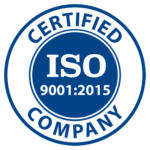HPM Grease Certification:
Learn About Advanced Categories
NLGI’s High-Performance Multiuse Standard Includes High Load, Other Types
Expanding Upon—Not Replacing—GC-LB Classification
Since 1989, the NLGI has recognized lubricating greases that meet specific performance benchmarks through their Certification Mark program, most notably the GC-LB Performance Classification. GC-LB began as an automotive chassis and wheel-bearing grease specification and now serves to mark quality for grease. With advances in technology, materials, and applications, the NLGI realized that updated specifications could help the broader industry.
Instead of replacing the GC-LB Performance Classification, NLGI recently launched its HPM CORE certification. Under this program, manufacturers face new testing requirements with stricter, “challenging yet achievable” standards to become HPM CORE certified. All tests are meant to raise the level of performance and to make the specification more relevant to multiuse industrial applications. Licensed HPM brands undergo rigorous qualification testing first and then “blind” field testing using independent laboratories to ensure they meet the HPM specification.
Why does the HPM certification matter?
- For grease manufacturers and marketers, the new HPM certification lets customers easily identify enhanced products that have passed the program’s rigorous performance testing. As of spring 2022, only six greases are licensed to use the HPM trademark, so these products stand out in an otherwise crowded grease market.
- For equipment owners and grease users, HPM helps in choosing enhanced formulas for higher performance. Selecting an advanced grease and handling preventative maintenance also extends equipment life and reduces cost of ownership.

What High-Performance Multiuse (HPM) Certification Means
- HPM + WR
- HPM + HL
High Load Carrying Capacity
- HPM + CR
- HPM + LT

There are four performance tags for now, but NLGI is also working on a Long Life subcategory that could be ready around 2023-2025. The institute views the HPM specification and its performance tags as living documents, so test requirements may be adjusted, deleted, or added going forward.
The performance tags have their own unique properties, so we’ll cover them in separate posts. First, let’s examine what it means for a grease to be certified as HPM + HL for high load carrying capacity.
What Makes HPM + HL (High Load Carrying Capacity) Grease Special
Greases that get certified as HPM + HL have proof they can address the needs of construction, agriculture, transportation, and mining equipment that are designed to carry heavy loads. Having a grease that performs with high load carrying capacity is vital, since specially formulated grease helps operators get the most out of their machinery.
HPM grease formulations are more robust—like containing high quality thickeners—in order to meet enhanced performance targets. By design, specialized grease protects equipment from wear and tear, stretches out service intervals, lowers maintenance costs, and increases efficiency. The two HPM + HL certified greases on the market advertise their use lubricating heavy-duty bearings in machinery such as vibrating sieves, roller conveyors, breakers, and wind turbines.

How HPM + HL Is Tested
While HPM CORE involves tests for corrosion and high and low temperature performance, to qualify for HPM + HL, a grease also has to pass five tests to demonstrate improved load carrying capability. Here’s what the high load category tests for, and why:
- Load bearing capabilities, wear protection and friction reduction (measured through 4-Ball Wear and 4-Ball Extreme-Pressure tests). These are the same tests as in the HPM CORE specification, but for HPM + HL, a grease must meet more challenging limits.
- Extreme pressure properties, to prove the grease holds up under heavy machinery stress.
- Fretting wear, a surface-to-surface type of wear that occurs in vibrating components when lubricant is squeezed out. Lubricants aim to prevent oxygen from reaching the fretting surface, and some additives help to reduce the effect of fretting. For HPM + HL, this is tested to show improvement on HPM CORE and at a tighter limit than in the existing GC-LB Certification.
Knowing the Right Grease for Your Needs
The HPM specification limits define how a grease must perform but not what has to be in its formulation, making the program “chemistry neutral.” This encourages manufacturers to innovate and improve grease formulas for better outcomes. There are other greases on the market that also meet high performance standards, so the HPM program is another method for recognizing quality products.
If you have questions about grease types, reach out to our team at Pack Logix. With over 70 years of experience working with high-caliber products, we’re recognized as the industry’s quality-driven contract packager of oils, lubricants, greases, fluids, and specialty products.


